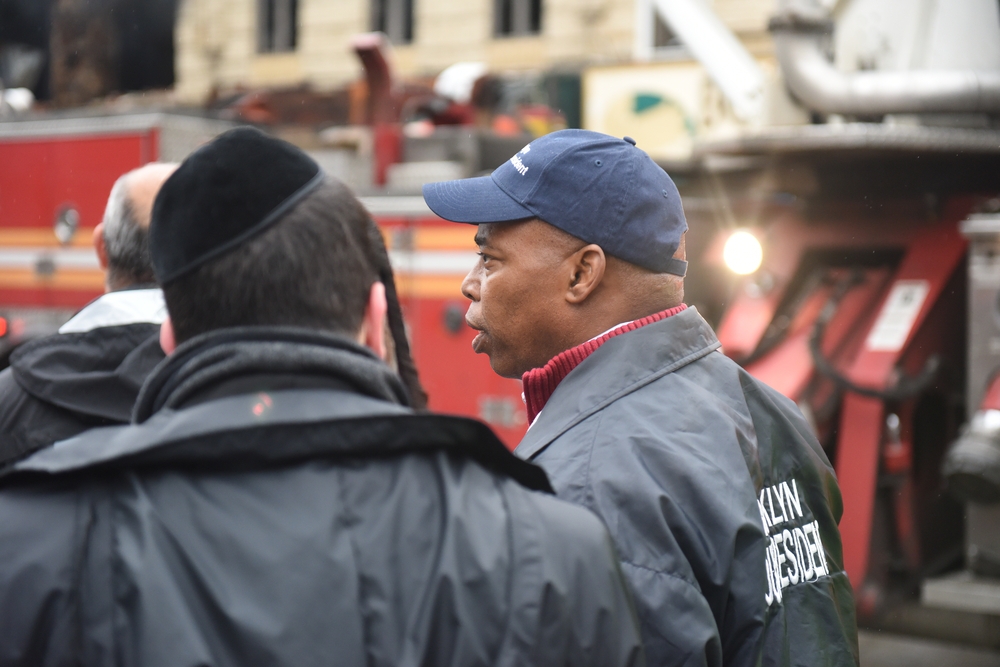Continuity | Risk
This Partnership Could Save Lives and Keep Your Business Running

If an emergency occurs at your facility, are you prepared to help law enforcement and first responders keep your people safe? What will they expect of you? Will they know their way around your facility? What resources should you have on hand to help the response team be more effective?
If you’re like most companies, you’re only just beginning to think about these kinds of questions. I spoke with a bank that only recently brought on a physical security director. Until then, they had assigned different security-related roles to different people. HR investigated the internal theft, maintenance handled hardware security. But they realized that they needed to develop a business continuity plan so that the bank could adapt, recover and continue to do business in the event of an incident.
As part of the effort, the new security director talked with law enforcement and partnered with them to develop the continuity plan. She asked questions such as, “What would you do in these scenarios? What can we do to be better at what we do? What roles do you need us to play in various situations?” Thanks to her, the bank has a plan that will help keep business operations as normative as possible when an incident occurs. Let’s explore how you can do that too.
Partnering with First Responders
The bank developed a public-private partnership with law enforcement first responders. This kind of partnership is built on sharing information to help mitigate disaster during an emergency. For some organizations, the idea of sharing information about your company is a deal breaker. But the benefits are tremendous.
If there’s an incident at your facility, you’ll want to be taken seriously by law enforcement first responders. You’re not Paul Blart, Mall Cop, but unfortunately, that stereotype still exists. Investing in public-private partnerships can prove your professionalism before an event happens. Start a dialogue and let them know who you are and what you’re capable of. When an event happens, you’ll have emergency personnel who see you as a valuable asset and understand what’s going on within your organization.
When events happen, you need people to know their roles—not just within your organization, but outside of your organization as well. And there are important things that you should know from a planning perspective. You need to know what first responders prioritize, what their response rates are and what their expectations are. For example, if there were an active shooter at your facility:
- Do you understand law enforcement’s role?
- Will they know where to stage the central command center?
- What do they need from you to do that?
- How will they know which entrance will get them closest to injured victims?
Mutual Agreements
Your partnership should include memoranda of understanding (MOU) and mutual aid agreements (MAA). These agreements are designed to help you understand each entity’s role within the grand scheme of things. You can create your own documents or find templates online.
The MOU establishes certain agreements about priorities and expectations during an incident. For example, if the power goes out in a city, certain entities will need fuel to power their generators. Which organizations will be the first to get the fuel? If you’re a healthcare facility, you probably want to be at the top of that list. Work with vendors, law enforcement and emergency management to create an MOU, so that the hospital will be one of the first organizations to receive the fuel.
An MAA is an agreement to assist and come to aid during a disaster. Sometimes law enforcement and first responders want to work with private organizations, because they have resources on hand that might be needed. For example, in the event of a flood, you might have equipment in storage that law enforcement could use as barricades.
Networking with government and local organizations in this way ensures that you’re not alone when an event occurs.
How to Get Started
Getting started is easier than you might think. Begin by joining the critical infrastructure protection team in your city or county. If you don’t have one in your area, start one! Form a central committee at the local level, a team of individuals from different sectors who are willing to foster public-private partnerships.
Your committee should plan for every conceivable event: What will the city do if there’s a severe blizzard or heat wave, or a school shooting? What resources and capabilities can you pool together? How will you respond to the crisis as a community? Identify the needs in various scenarios, then identify the organizations that can fulfill those needs, and develop relationships with those people. Work together to create MOUs and MAAs.
I also advise people to join InfraGard. InfraGard is a public-private partnership with the FBI for people who work within critical infrastructures. After a thorough background check, you’ll gain access to a portal of high-level, sensitive information-sharing. This is a key vehicle for the Federal government to bridge the gap and get people better trained and better informed.
By investing in these public-private partnerships with law enforcement first responders, you’ll put your company in a better position to mitigate the effects of an emergency. First responders will know more about your organization, so they’ll have a better response plan. And they’ll trust you to provide the help you’re capable of.
Get more physical security best practices—subscribe to the Circadian Risk blog.




